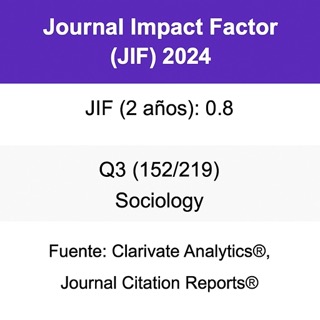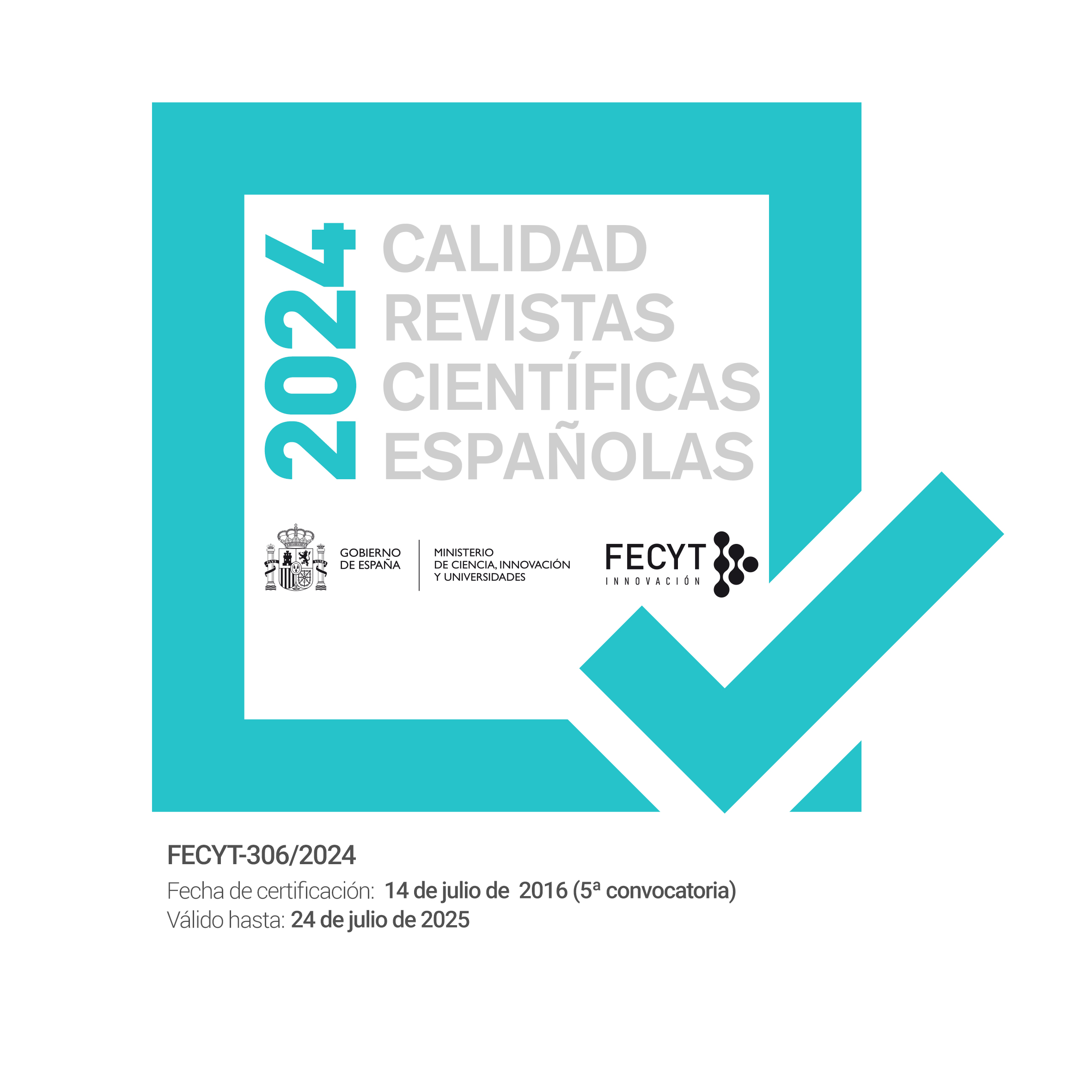En búsqueda de un equilibrio inestable en grupos científicos de alto rendimiento: Estilos de colaboración y de liderazgo
DOI:
https://doi.org/10.22325/fes/res.2023.148Palabras clave:
colaboración científica, liderazgo, grupos de investigación, alto rendimiento, ERCResumen
Este trabajo pretende explorar la influencia de factores socio-organizativos en los modos en los que los científicos representan y ponen en práctica la colaboración dentro de sus grupos de investigación. Hemos realizado un trabajo de campo basado en entrevistas semi-estructuradas a miembros de grupos de investigación, apoyado con el análisis de observaciones etnográficas en contextos de trabajo.
Hemos partido de cuatro ejes cuyo equilibrio los científicos consideran clave para sus prácticas de colaboración: Instrumentalidad, afectividad, jerarquía y agregación. Hemos reconstruido dos estilos de colaboración, uno basado en la búsqueda de cohesión grupal, y otro centrado en la estructura y la certidumbre. Factores como el tamaño y antigüedad de los grupos y la trayectoria de los investigadores son importantes para entender los estilos de colaboración que se promueven en cada grupo.
Citas
Alonso, L. E. (1998). La mirada cualitativa en sociología: una aproximación interpretativa. Madrid: Fundamentos.
Alvesson, M., & Kärreman, D. (2000). Varieties of discourse: On the study of organizations through discourse analysis. Human Relations, 53(9), 1125-1149. https://doi.org/10.1177/0018726700539002
Amabile, T. M., Schatzel, E. A., Moneta, G. B., & Kramer, S. J. (2004). Leader behaviors and the work environment for creativity: Perceived leader support. The Leadership Quarterly, 15(1), 5-32. https://doi.org/10.1016/j.leaqua.2003.12.003
Bandura, A. A. (1997). Self-efficacy: The exercise of control. New York: Freeman.
Barron, B. (2003). When smart groups fail. Journal of the Learning Sciences, 12, 307-359. https://doi.org/10.1207/ S15327809JLS1203_1.
Beaver, D. D. (2001). Reflections on scientific collaboration (and its study): past, present, and future. Scientometrics, 52(3), 365-377. https://doi.org/10.1023/A:1014254214337
Belli, S., & Balta, J. (2019). Mapeo de las publicaciones científicas entre América Latina, el Caribe y la Unión Europea. América Latina Hoy, 82, 7-41
Benozzo, A., & Colley, H. (2012). Emotion and learning in the workplace: critical perspectives. Journal of Workplace Learning, 24(5), 304-316. https://doi.org/10.1108/13665621211239903
Birnholtz, J. (2007). When do researchers collaborate? Towards a model of collaboration propensity. Journal of the American Society for Information Science and Technology, 58(14), 2226-2239. https://doi.org/10.1002/asi.20684
Borrego, A. (1999). La investigación cualitativa y sus aplicaciones en Biblioteconomía y Documentación. Revista española de Documentación Científica, 22(2), 139-156. https://doi.org/10.3989/redc.1999.v22.i2.335
Bozeman, B., & Gaughan, M. (2011). How do men and women differ in research collaborations?. Research Policy, 40(10), 1393-1402.
Bozeman, B., Fay, D., & Slade, C. P. (2013). Research collaboration in universities and academic entrepreneurship: the-state-of-the-art. The Journal of Technology Transfer, 38, 1-67. https://doi.org/10.1007/s10961-012-9281-8
Callon, M., Rip, A. & Law, J. (1986). Mapping the Dynamics of Science and Technology: Sociology of Science in the Real World. London: Macmillan Press.
D’Este, P., Ramos-Vielba, I., Woolley, R., & Amara, N. (2018). How do researchers generate scientific and societal impacts? Toward an analytical and operational framework. Science and Public Policy, 45(6), 752-763.
D.O.R.A. (2012). San Francisco declaration on research assessment (DORA).
Damşa, C. I. (2014). The multi-layered nature of small-group learning: Productive interactions in object-oriented collaboration. International Journal of Computer-Supported Collaborative Learning, 9(3), 247-281.
Engle, R. A., & Conant, F. C. (2002). Guiding principles for fostering productive disciplinary engagement: Explaining an emergent argument in a community of learners’ classroom. Cognition and Instruction, 20(4), 399-483.
Estalella A., & Sánchez Criado, T. (Eds.). (2018). Experimental Collaborations. Ethnography through Fieldwork Devices. New York: Berghahn.
Fairhurst, G. T. y Cooren, F. (2009). Leadership as the hybrid production of presence(s). Leadership, 5(4), 469-490. https://doi.org/10.1177/1742715009343033
Fairhurst, G. T., & Uhl-Bien, M. (2012). Organizational discourse analysis (ODA): Examining leadership as a relational process. The Leadership Quarterly, 23(6), 1043-1062. https://doi.org/10.1016/j.leaqua.2012.10.005
Fineman, S. (2003). Understanding Emotion at Work. London: SAGE.
Finkel, L., Parra, P., y Baer, A. (2008). Entrevista abierta en investigación social: trayectorias profesionales de exdeportistas de élite. En Estrategias y prácticas cualitativas de investigación social. Madrid: Pearson.
Furberg, A., & Ludvigsen, S. R. (2008). Students’ meaning–making of socio–scientific issues in computer– mediated settings: Exploring learning through interaction trajectories. International Journal of Science Education, 30, 1775-1799. https://doi.org/10.1080/09500690701543617.
Gómez-Ferri, J.; y González-Alcaide, G. (2018). “Patrones y estrategias en la colaboración científica: la percepción de los investigadores”. Revista Española de Documentación Científica, 41(1), e199. https://doi.org/10.3989/redc.2018.1.1458
Haas, E. B. (1980). “Why Collaborate? Issue-Linkage and International Regimes”. World Politics, 32, 357-405. https://doi.org/10.2307/2010109
Hackett, E. J. (2005). Essential tensions: Identity, control, and risk in research. Social Studies of Science, 35(5), 787-826. https://doi.org/10.1177/0306312705056045
Hara, N., Solomon, P., Kim, S. L., & Sonnenwald, D. H. (2003). An emerging view of scientific collaboration: Scientists' perspectives on collaboration and factors that impact collaboration. Journal of the American Society for Information Science and Technology, 54(10), 952-965. https://doi.org/10.1002/asi.10291
Harré, R., & van Langenhove, L. (Eds.) (1999): Positioning Theory: Moral contexts of Intentional Action. Oxford: Blackwell.
Healey, M. P., & Hodgkinson, G. P. (2017). Making Strategy Hot. California Management Review, 59(3), 109-134. https://doi.org/10.1177/0008125617712258
Hechanova, R., & Cementina-Olpoc, R. (2013). Transformational Leadership, Change Management, and Commitment to Change: A Comparison of Academic and Business Organizations. The Asia-Pacific Education Researcher, 22, 11-19. https://doi.org/10.1007/s40299-012-0019-z
Hicks, D., Wouters, P., Waltman, L., de Rijcke, S., & Rafols, I. (2015). The Leiden Manifesto for research metrics. Nature, 520(7548), 9-11. https://doi.org/10.1038/520429a
Hoekman, J., Frenken, K., & Tijssen, R. J. (2010). Research Collaboration at a Distance: Changing Spatial Patterns of Scientific Collaboration within Europe. Research Policy, 41(4), 520-531. https://doi.org/10.1016/j.respol.2010.01.012
Katz, J. S., & Martin, B.R. (1997). What is research collaboration?. Research Policy, 26, 1-18. https://doi.org/10.1016/S0048-7333(96)00917-1
Knorr-Cetina, K. (1999). Epistemic Cultures: How the Sciences Make Knowledge. Cambridge: Harvard University Press.
Krange, I. (2007). Students’ conceptual practices in science education—Productive disciplinary interactions in a participation trajectory. Cultural Studies of Science Education, 2, 171-203. https://doi.org/10.1007/s11422-006-9040-y.
Kwiek, M. (2020). What large-scale publication and citation data tell us about international research collaboration in Europe: changing national patterns in global contexts. Studies in Higher Education, 45, 1-21. https://doi.org/10.1080/03075079.2020.1749254
Latour, B., & Woolgar, S. (1986). Laboratory Life: The construction of Scientific facts. New Jersey: Princeton University Press.
Leydesdorff, L., & Milojević, S. (2015). Scientometrics. In M. Lynch (Ed.), International Encyclopedia of Social and Behavioral Sciences. Amsterdam: Elsevier.
Liebowitz, J. (2008). “Think of others” in knowledge management: making culture work for you. Knowledge Management Research and Practice, 1, 47-51. https://doi.org/10.1057/palgrave.kmrp.8500162
Ludvigsen, S. (2010). Sociogenesis and cognition. The struggle between social and cognitive activities. In B. Schwarz, T. Dreyfus, & R. Hershkowitz (Eds.), Transformation of knowledge through classroom interaction (pp. 302-318). New York: Routledge.
Maestre, F. T. 2019. Ten simple rules towards healthier research labs. PLoS computational biology, 15(4). https://doi.org/10.1371/journal.pcbi.1006914
Molas-Gallart, J., & Tang, P. (2011) Tracing ‘Productive Interactions’ to Identify Social Impacts: An Example from the Social Sciences. Research Evaluation, 20(3), 219-226.
Mumford, M., Scott, G. M., Gaddis, B., & Strange, J. M. (2002). Leading creative people: Orchestrating expertise and relationships. Leadership Quarterly, 13(6), 705-750. https://doi.org/10.1016/S1048-9843(02)00158-3
Newman, M. (2001). The structure of scientific collaboration networks. PNAS, 98(2), 404-409. https://doi.org/10.1073/pnas.98.2.404
Paavola, S., & Hakkarainen, K. (2005). The knowledge creation metaphor—an emergent epistemological approach to learning. Science & Education, 14, 535-557. https://doi.org/10.1007/s11191-004-5157-0
Pearce, C. L. (2004). The future of leadership: Combining vertical and shared leadership to transform knowledge work. The Academy of Management Executive, 18(1), 47-59. https://doi.org/10.5465/ame.2004.12690298
Raelin, J. A. (2013). The manager as facilitator of dialogue. Organization, 20(6), 818-839. https://doi.org/10.1177/1350508412455085
Remesal, A., & Colomina, R. (2013). Social presence in online small collaborative group work: a socioconstructivist account. Computers & Education, 60, 357-367. https://doi.org/S0360131512001698
Sarmiento–Klapper, J. W. (2009). The sequential co–construction of the joint problem space. In G. Stahl, & Studying Virtual Math Team (Eds.), Computer–supported collaborative learning series (pp. 83-98). New York: Springer.
Shrum, W., Chompalov, I., & Genuth, J. (2001). Trust, conflict and performance in scientific collaborations. Social Studies of Science, 31(5), 681-730 https://doi.org/10.1177/030631201031005002
Sonnenwald, D. H. (2007). Scientific collaboration. Annual Review of Information Science and Technology, 4, 643-681. https://doi.org/10.1002/aris.2007.1440410121
Spaapen, J., & van Drooge, L. (2011) Introducing ‘Productive Interactions’ in Social Impact Assessment. Research Evaluation, 20(3), 211-218.
Sutherland, N. (2016). Investigating leadership ethnographically: Opportunities and potentialities. Leadership, 14(3), 263-290. https://doi.org/10.1177/1742715016676446
Tsai, C., Corley, E., & Bozeman, B. (2016). Collaboration experiences across scientific disciplines and cohorts. Scientometrics, 108(2), 505-529. https://doi.org/10.1007/s11192-016-1997-z
Uhl-Bien, M. (2006). Relational leadership theory: Exploring the social processes of leadership and organizing. The Leadership Quarterly, 17(6), 654-676. https://doi.org/10.1016/j.leaqua.2006.10.007
Valsiner, J. (1994). Bidirectional cultural transmission and constructive sociogenesis. In W. de Graaf & R. Maier (Eds.), Sociogenesis reexamined (pp. 47-70). New York: Springer.
Valsiner, J., & Van der Veer, R. (2000). The social mind: Construction of the idea. New York: Cambridge University Press.
Van De Mieroop, D., Clifton, J, & Verhelst, A. (2020). Investigating the interplay between formal and informal leaders in a shared leadership configuration: A multimodal conversation analytical study. Human Relations, 73(4), 490-515. https://doi.org/10.1177/0018726719895077
Verbree, M. (2011). Dynamics of Academic Leadership in Research Groups. Den Haag: Rathenau Instituut.
Vermeulen, N., Parker, J. N., & Penders, B. (2013). Understanding life together: A brief history of collaboration in biology. Endeavour, 37(3), 162-171. https://doi.org/10.1016/j.endeavour.2013.03.001
Wagner, C. S. (2018). The Collaborative Era in Science. Governing the Network. Cham: Palgrave Macmillan.
Wellcome Trust. (2020). What researchers think about the culture they work. London: Wellcome Trust. https://wellcome.ac.uk/sites/default/files/what-researchers-think-about-the-culture-they-work-in.pdf
Wertsch, J. V. (1991). Voices of the mind: A sociocultural approach to mediated action. Cambridge, MA: Harvard University Press.
Whitley, R. 2000. The intellectual and social organization of the sciences. Oxford: Oxford University Press.
Publicado
Cómo citar
Número
Sección
Licencia
Derechos de autor 2022 Simone Belli

Esta obra está bajo una licencia internacional Creative Commons Atribución-NoComercial 4.0.
Todas las publicaciones de la Revista Española de Sociología se realizarán bajo una licencia abierta Creative Commons de Reconocimiento 4.0 Internacional (CC BY 4.0). Dicha licencia establece que los autores son los poseedores de los derechos de propiedad intelectual de sus trabajos, que pueden redistribuirse a cambio de un reconocimiento adecuado. Para más información de la licencia Creative Commons, consultar aquí.
Una vez aceptado un artículo para su publicación, la Revista Española de Sociología solicitará al denominado "autor para la correspondencia" la aceptación de una licencia obligatoria Creative Commons incluida en un acuerdo o contrato de publicación.




